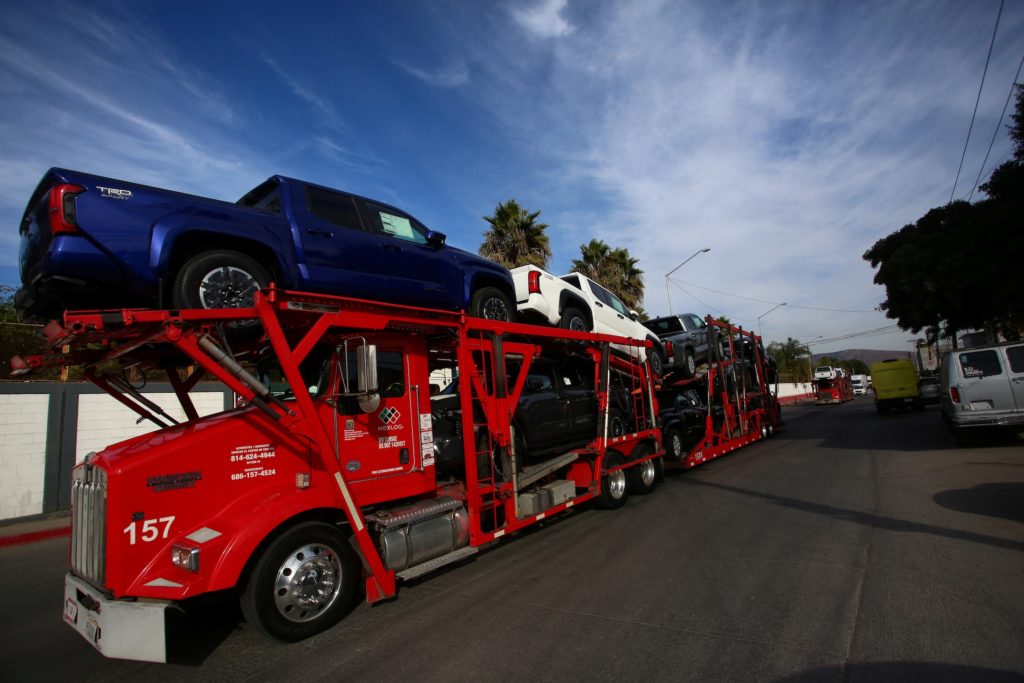Real-Time Tracking Already Detects Shifts in the Auto Market
New Tariff Talk from the Administration Is Already Moving the Market
April 1st, 2025
You may also like: Tariffs Are Here: AEG Warns Car Prices Are About to Surge

As of today, we’re just a day away from what could be a major shakeup in the U.S. auto industry. The current administration is expected to announce sweeping new tariffs—potentially 25%—on all cars and auto parts manufactured outside the country. While the final policy details are still being negotiated behind closed doors, early signals are already sending ripples through the market.
CarFinderZone’s real-time tracking is picking up noticeable shifts in inventory patterns, pricing behavior, and dealer activity. It’s clear that many players—dealers, manufacturers, and even consumers—aren’t waiting for the April 2 announcement to make their moves.
Big Players Are Already Reacting
One of the most noticeable changes comes from Hertz, one of the largest rental car companies in the U.S. Along with its rental operations, Hertz runs a sizable used car sales business, largely made up of cars rotating out of its rental fleet. Just last week, Hertz cut about 20,000 vehicles from its public inventory listings—a huge move by any standard.
Hertz typically sells cars from two sources:
- Certified pre-owned vehicles retired from its rental lineup and placed on dealer lots
- Rent2Buy vehicles, which customers can rent for a few days before deciding to purchase
Rent2Buy usually accounts for around 90% of their sales listings, and what makes this model so flexible is that many of these vehicles remain active in the rental fleet while listed for sale. This allows Hertz to pivot quickly—like now, for example.
It’s unlikely those 20,000 cars were snapped up overnight. What’s more likely is that Hertz is pulling some inventory offline, waiting to see how used car prices respond in the coming days or weeks. Used vehicles themselves won’t be hit with tariffs, but the used car market closely tracks the new car market. If prices on new cars rise due to import costs, used cars typically follow suit. We saw this play out during the early stages of the pandemic when supply shortages drove up prices across the board.
CarMax: This Time It Looks Like Sales
Meanwhile, CarMax, the largest used car retailer in the U.S., also showed a big shift. CarFinderZone data indicates a 10% drop in inventory over the past week. But unlike Hertz, this drop looks more like actual sales rather than a strategic pause.
What’s happening here? Likely a rush of buyers getting ahead of potential price hikes. With news of tariffs circulating and no clear signs of price relief on the horizon, consumers may be opting to buy now rather than wait. And honestly, that’s probably a smart move. Once new car prices start climbing, the ripple effect hits used cars and even maintenance costs.
Tariffs Could Hit Deep, Even Before They’re Official
To understand the scale of what’s at stake, consider this: in 2024 alone, the U.S. imported over $100 billion in automotive products just from Mexico and Canada. Globally, that number climbs to about $246 billion. A 25% tariff on both fully assembled vehicles and auto parts would impact nearly every manufacturer—but not equally.
Mazda, for example, could be hit hard. Most of the vehicles it sells in the U.S. are imported. Compare that to Tesla, which manufactures all the cars it sells in the U.S. right here at home. But even Tesla isn’t immune—they still rely heavily on imported components. In reality, very few automakers operate with 100% domestic supply chains, which means no one’s completely insulated from these changes.
Don’t Forget About Repairs
It’s not just new and used car shoppers who need to pay attention. Car owners who plan to keep their vehicles longer could also feel the impact—especially when it comes to maintenance and repairs.
The aftermarket parts industry is overwhelmingly dependent on imports. From brake pads to sensors to body panels, most parts found at your local repair shop or ordered online come from outside the U.S. If tariffs go through, costs could spike quickly—and those increases will likely get passed on to customers.
Auto shops typically don’t hold much inventory. They order parts as needed, which means even a small bump in prices at the wholesale level could result in noticeable price hikes for everyday repairs. If your car needs service in the coming months, don’t be surprised if your repair bill is a little steeper than usual.
What Comes Next?
At this point, we’re still waiting on the final word. The administration’s policy could shift at the last minute, and what gets announced on April 2 might not match the early reports from the past few weeks. Either way, the market is already responding, and fast.
We’ll be watching developments closely. If the policy details change, or if more market activity starts to show up in our tracking systems, we’ll update this article accordingly.
So whether you’re buying, selling, or just keeping your car in shape—pay attention. This isn’t just a headline. It’s already happening.



Copy link to clipboard